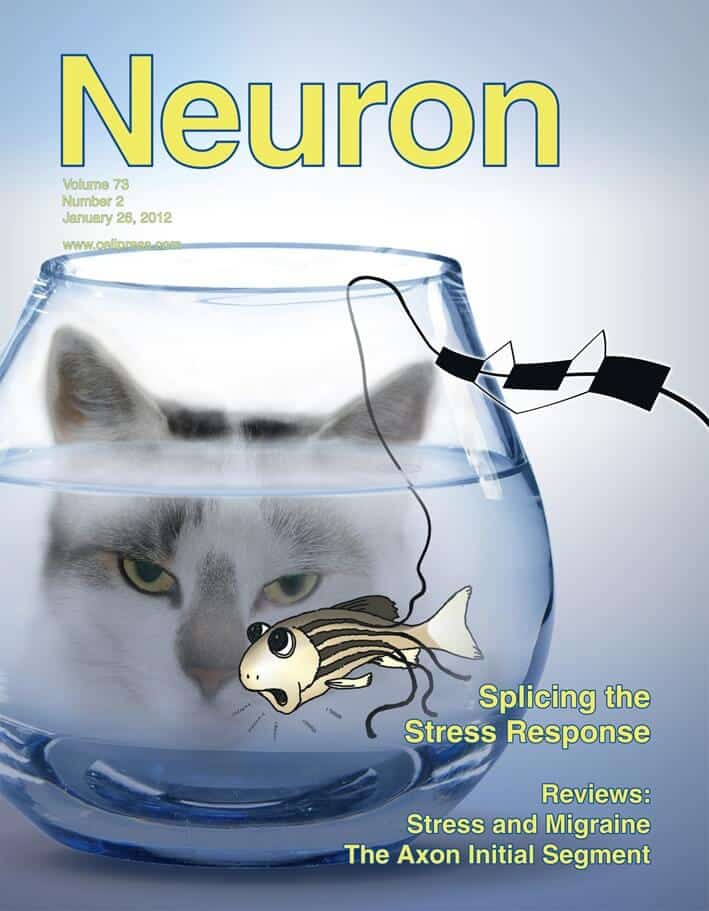Weizmann Institute of Science scientists have discovered new details about the mechanism responsible for the body's response to stressful situations

Our body is on constant alert for an immediate response in case of danger. A few minutes after we perceive a threat, a whole network of biochemical signals is activated. The center in the brain that is responsible for our reaction to danger begins to act, which leads to the release of the central "stress hormone" - cortisol. At the same time, the body activates additional biochemical networks, whose role is to stop the stress response when the danger has passed.
Dr. Gil Lebkowitz and his group members in the Department of Molecular Biology of the Cell recently discovered a new type of switch in the brain, which controls the transmission of one of the main signals responsible for the release of cortisol. These findings, recently published in the scientific journal Neuron, may shed light on processes occurring in several neurological problems related to stress, such as post-traumatic syndrome, depression and schizophrenia.
The main signal responsible for the release of cortisol is the "cortropin-releasing hormone" (CRH). The CRH is created and stored in special nerve cells in an area of the brain called the hypothalamus, which is involved, among other things, in controlling the body's responses to physiological and psychological stress. The sensing of danger, the processing of information, and the transmission of instructions that introduce the body to deal with stress - all of this takes place in this small area of the brain. Immediately after the nerve cells secrete the CRH pool from them, a command arrives to produce a new pool.
The research was led by Dr. Liat Amir-Zilberstein, along with Dr. Zhanna Balchman, Dr. Adriana Reuveni, Dr. Natalia Borodovsky and research student Maayan Tahor. The scientists studied the production process of the CRH hormone in the brains of zebrafish, and discovered the switch that controls its production: it turns out that the protein called Otp is involved in several stages of the production of the hormone. The protein stimulates and activates the genes that code for CRH, and controls the production process of the two receptors for the hormone, which are found on the surface of nerve cells. These receptors function, in fact, as "on" and "off" switches.
The scientists discovered that the two receptors are obtained from a single gene, through a genetic editing mechanism called "alternative splicing". In this process, genetic segments go through "cut and paste" processes to produce different "sentences", which code for different proteins. In this case, the gene produces two versions of receptors: a short version from which the "on" receptor is formed, and a longer version, responsible for the "off" receptor. The researchers discovered that when the danger passes, the ratio between the two types of receptors on the surface of the nerve cells gradually changes, from an excess of "on" receptors to a greater amount of "off" receptors. In collaboration with Dr. Laura Bali-Quiff and Dr. William Norton from the Institute of Neurobiology at the National Center for Scientific Research (CNRS) in France, the researchers showed that blocking the production of the long version of the receptor causes zebrafish to behave anxiously.
Together with Dr. Alon Chen and Dr. Yehezkel Steinberg from the Department of Neurobiology at the Institute, Dr. Lebkowitz and his team members wanted to know if this mechanism for CRH production is also found in other animals. They discovered that the switch based on alternative splicing is also found in mice. The fact that the same mechanism is found in fish and mice indicates that it has been preserved throughout evolution, and hints at the possibility that a similar mechanism also exists in the human brain.
The alternative splicing mechanism has been known since the late 70s, but these findings may be the first evidence of the existence of such a rapid "on-off" switch in the brain. Defective switches are known to play a role in various stress-related diseases and disorders. For example, the activity of the receptors studied by Dr. Lebkowitz was recently found to be associated with post-traumatic stress disorder, as well as schizophrenia and depression. Malfunctions in the alternative splicing mechanism have also been found in epilepsy, mental retardation, bipolar disorder and autism.
Link to the scientific article
